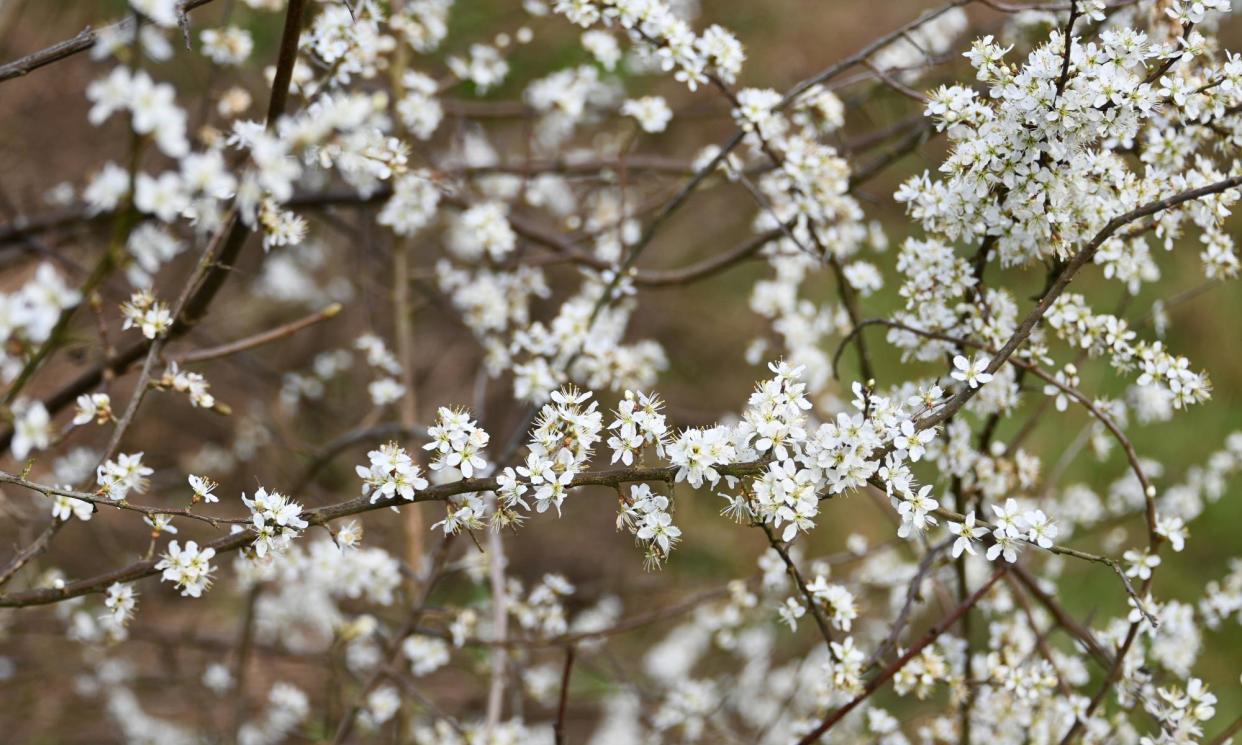Country diary: The flowering blackthorn is a plant of glorious contrasts

While the magnolia’s decidedly middle-class flowering dominates everyone’s attention, I prefer the hidden, grubbier events of spring, the kind I know we’ll find down the muddy path that runs between the industrial units and the strip of boggy wetland on our old housing estate.
It is a beautiful day. The sky is blue, the breeze fresh. There’s litter here, sure – piles of it – and the loud whine of machinery, but my senses soon return me to the mouthy, joyful cascade of wren song. First we pass hawthorn holding its clean, new leaves in quiet readiness. But it isn’t its turn just yet: right now it’s the blackthorn’s turn to take spring’s stage.
The path bends and there it is: clouds of blossom, pillowy and jumbled. The gnarled blackthorn bushes are covered in thousands upon thousands of white stars, their firework middles exploding in all directions. They won’t think of leafing for a while yet, and so there is only this dark and light, each flower the colour of freshly washed linen.
Indeed, it is a perfect drying day, a day to imagine the crone-like figure often associated with blackthorn busying herself with spring business. Traditionally, blackthorn was associated with sinister, cackling mischief – it was the wood of witches’ wands and staffs, its huge, sinister thorns the tools of curses and devil’s pacts.
It is said that winter begins when the Cailleach, the Crone of Death, strikes the ground with her blackthorn staff, ushering in a season of loss and misfortune – but if blackthorn begins the winter, perhaps it can also be seen to mark the end of it. If you half close your eyes, can’t you imagine the Cailleach now, her sleeves rolled up, ushering in new warmth as she washes and pegs each bright rosette to those wicked black spikes? To look at a blackthorn in bloom is to see death and new life, beauty and defiance, joined in perfect balance, just as night and day meet neatly at the equinox.
Give me this tough-as-old-boots sort of spring any day, the kind that offers something more than prettiness, a spring of matriarchal, fierce protection – but perhaps only if you’ve a mind to show respect. The ill-mannered who drop their beer cans here should watch their step: one inebriated stumble and those thorns may prove unforgiving.
• Country diary is on Twitter at @gdncountrydiary


